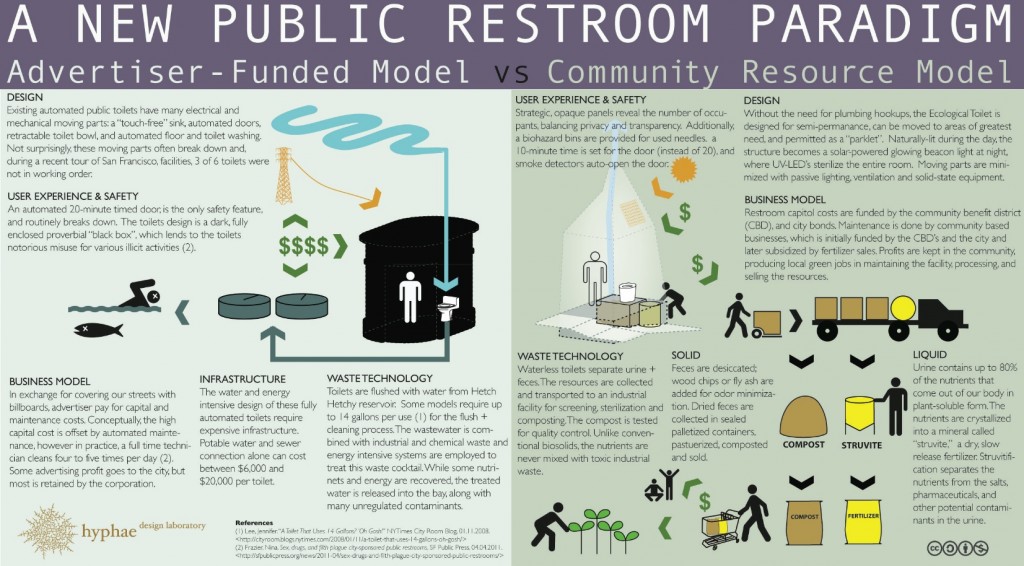Will no-mix toilets work on San Francisco streets?
At PHLUSH we’ve been looking at urine diversion technologies and think no-mix toilets are going to be really important in the future. And we’re keen to get the word out as we consider earthquake preparedness and what to do for emergency household toilets when we can’t flush. So a proposal, picked up by the New York Times, to use urine diverting “no-mix” toilets to serve users San Francisco’s Tenderloin District intrigued us.
But could no-mix toilets possibly work as urban public toilets, we wondered? So we asked Mathew Lippincott, who’s leading PNCA’s Collaborative Design Studio on toilets, and he immediately stumbled on several dangerously unfounded assumptions in the design. First, while urine is indeed valuable, selling it won’t cover facility costs. Second, not mixing urine and feces when using a toilet requires awareness and training; public toilets are not the place to instill such subtle behavior change. Third, using UV lights to sterilize poop and to illuminate the facility would cause eye damage! Read Lippincott’s Note to aspiring restroom designers.
While it’s good to see San Franciscans trying to put restrooms where the public needs them, it’s okay to stick with flush toilets in heavy use downtown areas with water and sewer connections. Hyphae Design Laboratory and the North of Market Tenderloin Community Benefit District would do well to look to Portland, where Portland Loos safely serve downtown users 24/7, and to Victoria, British Columbia, which now offers the Victoria Urinal and will soon be home to the Portland Loo. Resources on our website and the PHLUSH Public Restroom Design Principles can familiarize local communities with the options and help them make better decisions.

